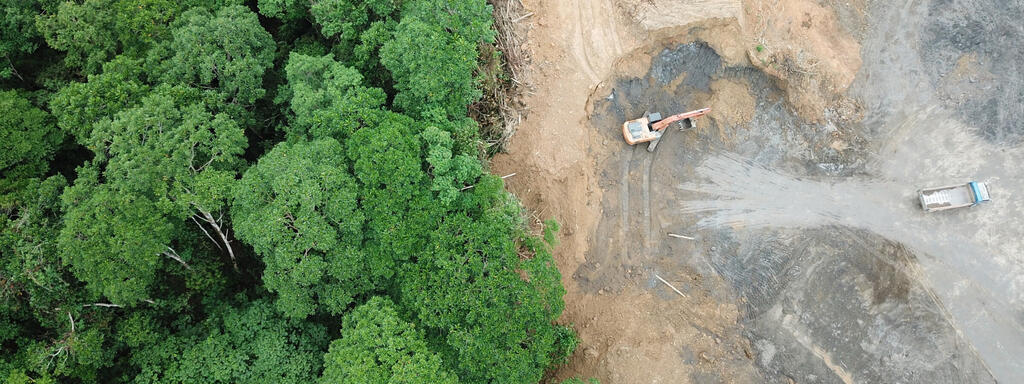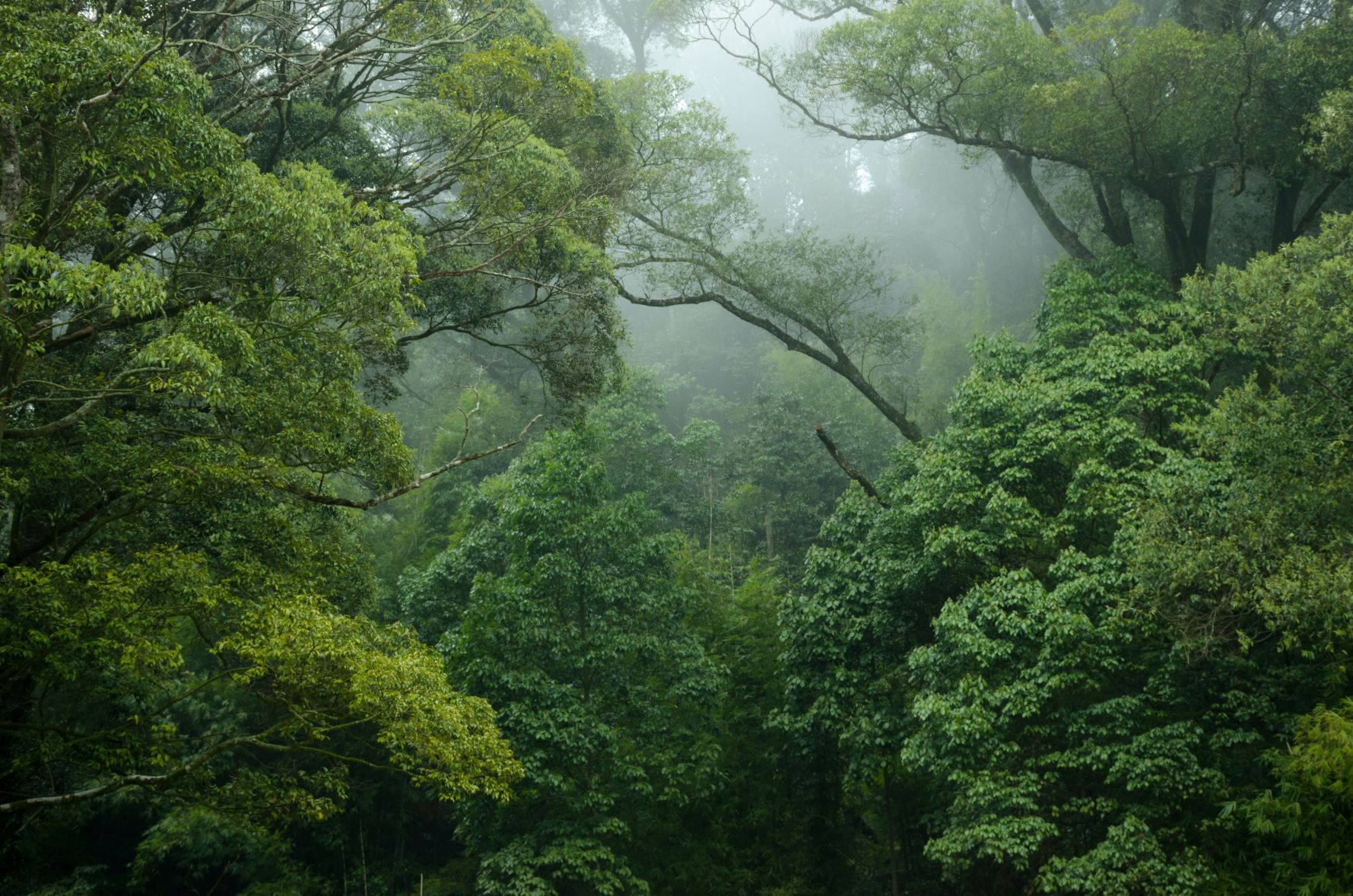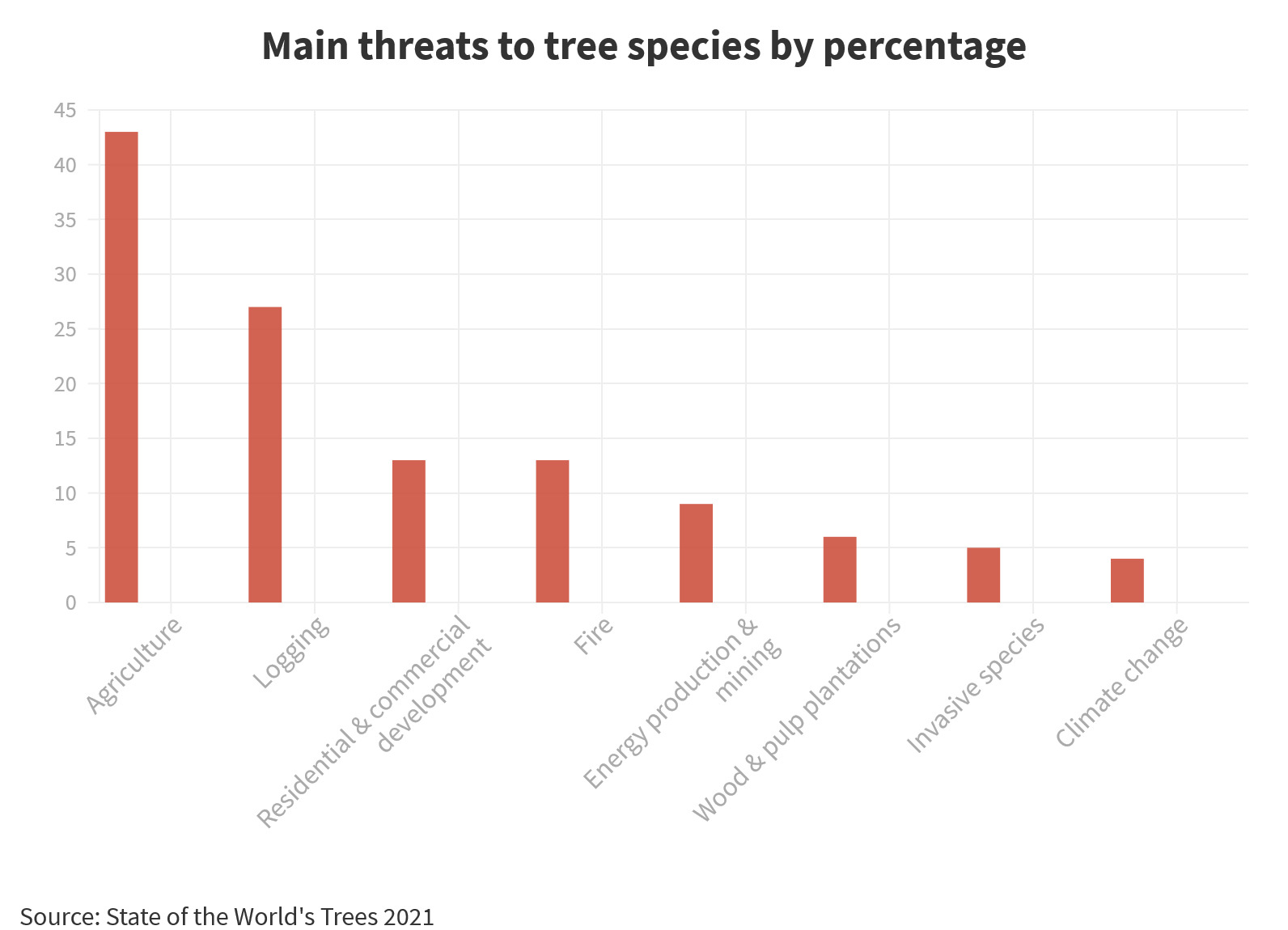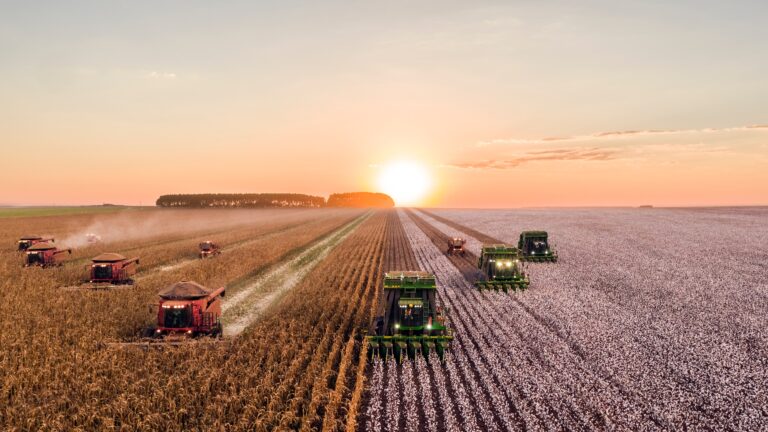
More than half of all tree species could face extinction
A comprehensive new assessment of the conservation status of all trees reveals that 30-60% of species are at risk of extinction, mainly due to habitat destruction for agriculture.

Vanishing forests
The State of the World’s Trees report compiles the extinction risk of all 58,497 known tree species. Of these, at least 142 species have already been declared extinct in the wild. Almost a third of species have been assessed as either Vulnerable, Endangered or Critically Endangered on the International Union for Conservation of Nature’s (IUCN) Red List of Threatened Species, while a further 30% are likely threatened also, but the available data is insufficient for a robust classification.
Over the past three centuries, global forest area has decreased by about 40% and 29 countries have lost more than 90% of their original forest cover. Forest clearance for farming is by far the biggest pressure, identified as the main threat to almost half of all species. This is unsurprising considering half of all habitable land is already used for agriculture (with a staggering 77% of this dedicated to raising livestock).
Conversion of natural habitat to agriculture to keep up with our growing population and overconsumption of animal products is the most important driver of biodiversity loss globally, which is why an increasing number of scientific reports are calling for “transformative change” to our food systems.
Other key threats to tree species are direct exploitation for timber (logging), followed by development of human infrastructure, forest fires, energy production and mining, conversion of forests to wood pulp plantations, invasive species, and climate change impacts (not including fires).

On average, 11% of countries’ tree species are threatened. There is wide discrepancy between countries, however, with tree species restricted to islands faring predictably badly. At 69%, St Helena has the highest proportion of threatened species, followed by Madagascar (59%) and Mauritius (57%). When looking at broader geographic regions, tropical Africa has the highest proportion of threatened species, while the temperate zones of Europe, Asia and North America with relatively low tree diversity have the lowest proportion of threatened species.
Tree(s) of life
The report points out the vital ecosystem services provided by trees – half of the world’s terrestrial carbon stocks are locked in forests, and more than three-quarters of the world’s accessible freshwater comes from forested catchment areas. In addition, forests are fundamental to biodiversity, being home to more than three-quarters of the world’s land-dwelling species.
The authors call for urgent action to reverse the decline of the world’s trees, recommending the inclusion of effective tree conservation measures in the new global framework for biodiversity, as well as in forthcoming climate plans. They point out that currently, only 15% of all land area has formal protection status, which must be significantly increased to preserve remaining forests.
Unfortunately, the report does not acknowledge the need to end human population growth through the advancement of positive, empowering solutions. It is clear that if we stay on our current growth trajectory towards 11 billion people by the end of the century, reducing the threats to trees and setting aside protected areas will become ever more difficult.



